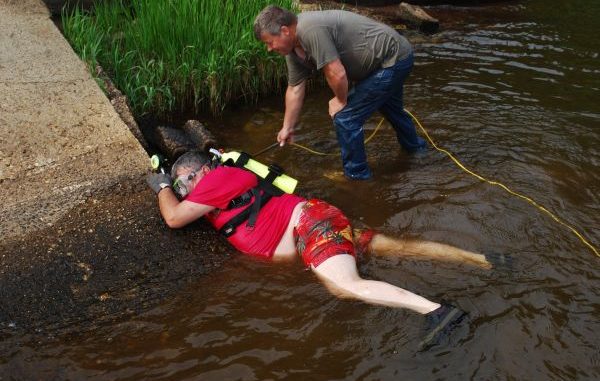
Catfish noodlers, grabbers or wrestlers, whatever you call them, take advantage of an important trait in the biology of North American freshwater catfish. They need to spawn in cavities of some kind. Before humans accidentally or deliberately introduced man-made objects into rivers and lakes, flathead catfish (the proper name for our hero here), blue catfish, channel catfish and black and yellow bullheads had to settle for hollow logs and cavities washed out under the banks of the waterbody.
Cavities, natural or manmade, are always staked out by male fish first, with the bigger fish able to claim the best holes. The male will use his jaws to scour the cavity as clean as possible. If the cavity is something metal, such as a 55-gallon drum, the inside will be polished to be almost mirror-like.
Once the cavity is prepared, a female fish ripe with roe is courted by the male to enter the cavity. During spawning, which may last as long as four hours, the male and female will nestle side-by-side. Eggs and sperm are discharged into the water, and fertilization is random.
After spawning, the male aggressively chases away the female, and the male will stand guard over the nest. Hatching, in the case of flatheads, takes about a week, but the male will continue to guard the young fry until they absorb their yolk sacs and become free-swimming.
Experience has shown the men that half of the sets which contain an Op will hold a male alone. The other half will hold both a male and a female. Invariably, the male is the larger fish of the pair.
The numbers were borne out this trip. Not counting the several fish released because they were too small, three sets produced one fish — all males. Two sets produced pairs, and in both cases the male was noticeably the larger of the two.
